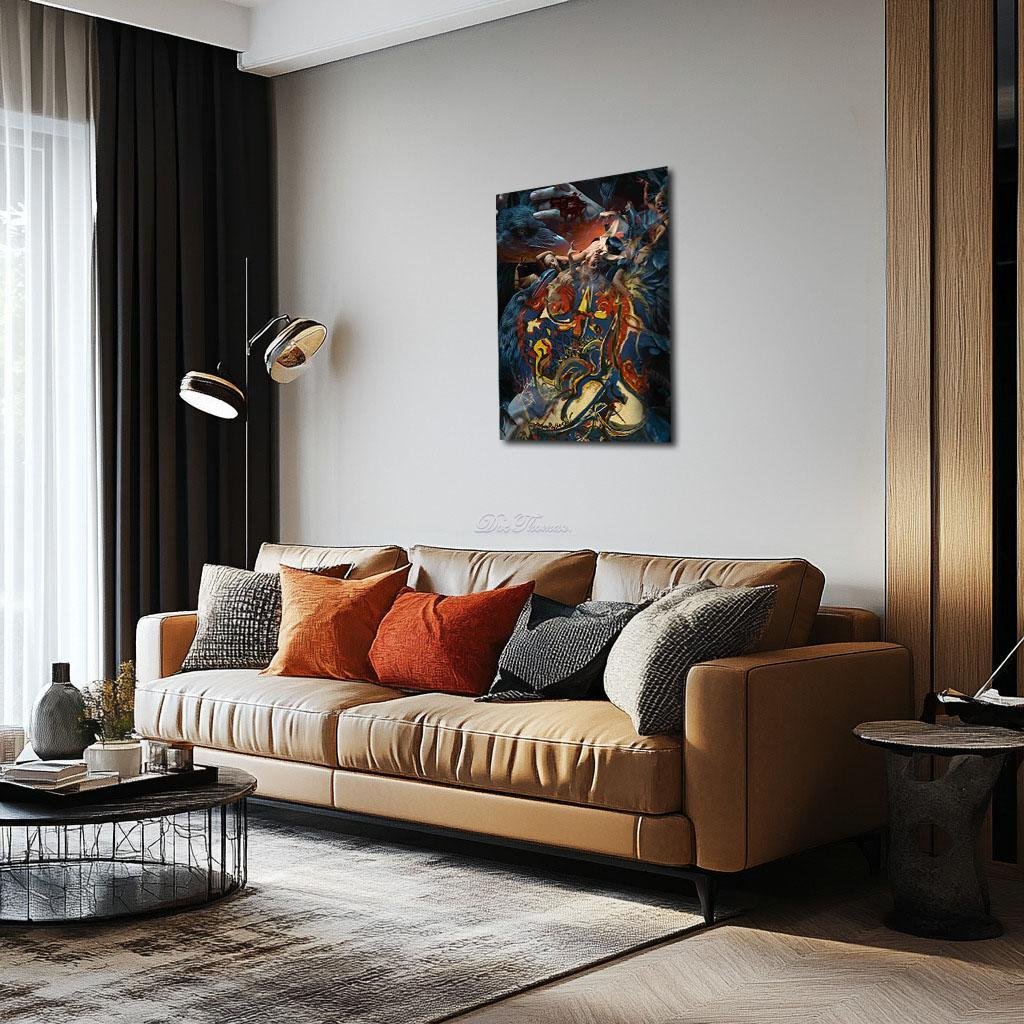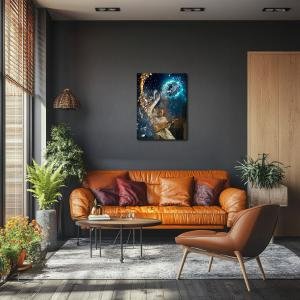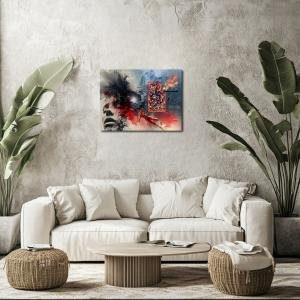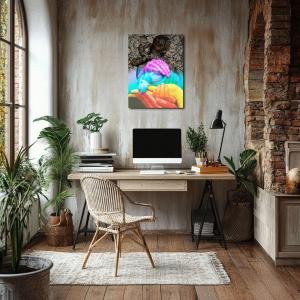Veins of Porcelain: The Eclipse of the Animal Moon
Veins of Porcelain: The Eclipse of the Animal Moon transforms Pollock’s The Moon-Woman into a violent mythic ritual of feminine force and feral prophecy. The goddess emerges from a tapestry of ravens, flames, and dancers lost in ecstatic trance. A gun glints above the scene, threatening modern intrusion into ancient rites. Pollock’s vivid chaos bleeds through the lunar blues and hellish reds, coiling into a divine scream. This is a vision where myth bleeds into violence, and femininity rises not to soothe, but to strike. A storm of feathers, flames, and fractured divinity—howling beneath the moon’s eclipsed eye.
Please see Below for Details…
Hotline Order:
Mon - Fri: 07AM - 06PM
404-872-4663
Veins of Porcelain: The Eclipse of the Animal Moon reinterprets Jackson Pollock’s The Moon-Woman as a convulsive ritual of power, femininity, and violence woven through myth, beast, and battlefield. Here, the lunar goddess emerges not as a distant celestial archetype, but as a feral figure born from the scream of nature and the madness of myth. In this surreal confrontation, Pollock’s original symbols—already raw with primal motion—are overlaid with images of birds, blood, dancers, and weapons, forming a violent lunar liturgy where instinct, divinity, and fear merge.
At the heart of the composition, Pollock’s chaotic totem rises like an ancient tapestry—its blues bruised, its yellows oxidized, its reds ignited. His brushwork claws and coils, not in abstraction but in urgent figuration. The Moon-Woman’s form is fractured, assembled from claws and horns and fractured gold—a goddess not gentle but gnashing. The canvas becomes an altar where ancient blood rituals meet psychological fragmentation. The painting within the painting feels alive, animated not by serenity but seizure.
Around this central core swirl the dark birds of omen—enlarged ravens with luminous eyes, their beaks open as if mid-prophecy. They are watchers, perhaps messengers of the goddess or harbingers of collapse. Their feathers fade into night sky and battlefield alike, their presence thick with forewarning. Perched above, a hand grips a crimson-tinted revolver, its cold shine juxtaposing the wildness below with the brutal logic of human tools. The symbolism is precise and jarring: nature, prophecy, and power now intersect with steel and trigger.
The upper right corner bursts into frenetic movement: dancers, warriors, witches—female figures in ritual disarray—suspended in gestures of ecstasy and agony. Their limbs form spires and spirals, twisting like vines or smoke rising from sacrificial pyres. These women are not bound by form or control; they are the embodiment of release, chaos, divine fury. Their motion is simultaneously liberating and terrifying. They invoke—not with incantations—but with the pure convulsion of body, of myth made flesh.
The palette is dominated by tension. Pollock’s deep ultramarines and sun-scarred yellows collide violently with the lacquered red of blood and the bone white of light-struck feathers. The ravens are ink-black with streaks of stormy grey, merging into the night that spreads across the top half of the composition. Flames of orange and crimson curl at the horizon line, suggesting both apocalyptic fire and lunar eclipse. The background flickers with blue shadows and golden scratches, echoing Pollock’s manic linework in the feathers, talons, and fabric folds of the dancers.
As an artist, my thoughts while constructing this piece circled the idea of feminine power unbound—not the nurturer, not the muse, but the mother of war, the lunar sovereign of instinct and death. Pollock’s The Moon-Woman always felt like a shriek made visible—a creature formed of color and scream. I wanted to breathe into her the breath of creatures and chaos, to situate her not in an abstract void, but at the center of a ritual that has no audience and no mercy.
The weapon above is no accident. It is the myth disrupted by modernity. The feminine divine cannot be summoned without summoning also what threatens her—the gun, the gaze, the history of conquest that always follows prophecy. Yet even in that intrusion, the Moon-Woman remains. She does not flinch. Her dancers continue. Her ravens watch. She consumes the gesture and spits out transcendence.
Veins of Porcelain: The Eclipse of the Animal Moon is not a painting of peace. It is a vision of blood memory—a myth built from broken symmetries and remembered violence. It is lunar and primal, savage and radiant. The Moon-Woman does not reflect sunlight—she radiates her own darkness.
Add your review
Your email address will not be published. Required fields are marked *
Please login to write review!
Looks like there are no reviews yet.








